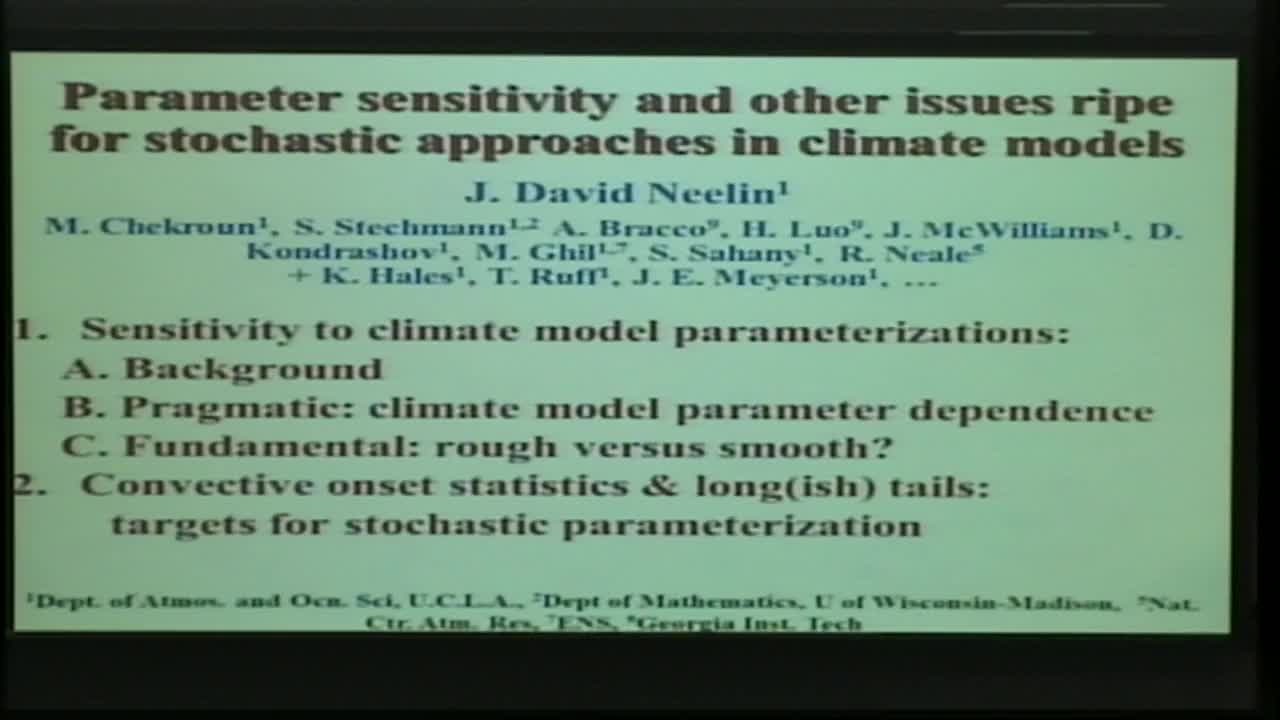Parameter Sensitivity and Other Issues Ripe for Stochastic Approaches in Climate Models
Presenter
March 11, 2013
Keywords:
- Sensitivity, parametric
MSC:
- 90C31
Abstract
The representation of subgrid scale processes introduces many poorly constrained parameters into mathematical representations of the climate system, contributing substantial uncertainty in model projections of climate change, especially for variables such as precipitation. This talk will outline a few pragmatic problems where connection to the stochastic community may be productive. Examples in climate models suggest that the parameter dependence for leading climate statistics can be approximated as smooth, although with nonlinearity strong enough to be important within the feasible range for certain parameters. This apparent smoothness is conjectured to be due to the internal variability acting like a noise bath for the observables of interest. To the extent this holds, it permits practical techniques for sensitivity quantification, for instance borrowed from the optimization literature, and suggests that part of the difficulty in tuning climate models may be viewed as the challenge of a multi-objective optimization problem of high dimension. But what might be the limitations to such smooth approximations? This is illustrated in an intermediate complexity model of El Niño, which in certain flow regimes exhibits rough parameter dependence in the following sense: statistics of important observables exhibit rapid changes within parameter intervals small compared to what could be constrained by any achievable observing system. This motivates an approach based on estimating Ruelle-Pollicott resonances filtered through a subset of climate observables in a related talk by M. Chekroun. In a Markov representation — in which non-observed variables act as noise — the spectral gap (given by the separation of eigenvalues of the transition matrix from the unit circle) is related to the sensitivity of the system.
Finally, the practical example of improving constraints on deep convective parameterization is associated with a number of statistics for the onset of deep convection, including longer-than-Gaussian tails in water vapor distributions, and related behavior in temperature and other tracers, that will be outlined for their connection with talks by S. Stechmann and P. Sura.
(Joint work with M. Chekroun, S. Stechmann, A. Bracco, H. Luo, J. McWilliams, D. Kondrashov, M. Ghil, S. Sahany, R. Neale, K. Hales.)
